Crankbait Bass Fishing: An In-Depth Look
When you’re fishing with bass lures, you have near-infinite options to choose from. Lures first started being mass-produced and widely used in the early 40s a few years after George Perry caught what used to be the world record for bass and kickstarted the sport fishing hobby. The industry has done nothing but skyrocket since.
With that being said, even with everything that has been released over the decades, a handful stand out as staples for fishermen everywhere.
Among those is the humble crankbait. It’s one of the first lures many young anglers use when they get off a bobber rig, and they usually find a permanent spot in an angler’s tackle box.
If you’re not experienced with them, or you’re just looking for some tips to get better with them, the team at BassForecast has put together this guide on crankbait bass fishing to get you started.
Newsletter Signup
What is a Crankbait?
A crankbait is a unique type of hard bait. The body is shaped like a teardrop with the narrow end representing the tail of a fish. These are typically painted in natural colors to represent bait fish and craws, or they can be painted a wide variety of unnatural colors for specific water conditions.
Crankbaits can be outfitted with one or two hooks. Most have treble hooks, but you can find single-hook models, and you can even experiment with replacing the hooks, but you have to consider the impact you’ll have on the lure’s action if you do.
There are also two types of crankbaits. Normal ones and lipless models.
You can tell which one you’re looking at by noticing the plastic “bill” on the nose of the bait, or the lack of one. That plastic bill is called the lip, and it’s what controls the lure’s action and depth in the water. Without one, the lure can wobble more erratically, and the depth can vary more dramatically if you know how to work the lure properly.
Crankbaits are made by many different brands, and there are tons of little tweaks to the tried-and-true standard that you can experiment with, and we’ll talk about some of our favorites, later on. What Sets Crankbaits Apart?
This is important to know because it’s the exact reason you’ll have to use the strategies we talk about later instead of just tossing it around randomly.
A crankbait works by making the bass angry and forcing a reaction bite. The wobbling motion we mentioned earlier creates erratic vibrations in the water, and the bass cannot stand it.
This is the key differentiator between crankbaits and other lures that are somewhat similar.
What Sets Crankbaits Apart?
This is important to know because it’s the exact reason you’ll have to use the strategies we talk about later instead of just tossing it around randomly.
A crankbait works by making the bass angry and forcing a reaction bite. The wobbling motion we mentioned earlier creates erratic vibrations in the water, and the bass cannot stand it.
This is the key differentiator between crankbaits and other lures that are somewhat similar.
How to Use a Crankbait
Crankbait lures are extremely easy to use, but because crankbait hooks are typically small flexible treble hooks, you need to use them with the right rod and reel setup.
For a rod, if you are using a monofilament or Flourocarbon line, you should use a fairly long medium power, moderate action rod matched with a line from 6 to 17lb test depending on the type of cover you will be fishing. The reason for a long rod is that you will want to make longer than normal casts to give your crankbait time to reach its optimal running depth. And, you need some bend and give in the rod so that when the fish runs and lunges, the rod acts as a shock absorber that keeps constant pressure on the fish but is not so rigid that the small hooks tear from its mouth. If you want to use non stretch braided line, you need an even more limber rod.
For a reel, if you want to fish shallow running or lipless crankbaits fast, a small profile fast gear ratio reel will be the best performing and most comfortable for all-day long fishing. If you are going to be fishing large deep diving crankbaits, you will want to use a reel with a slower gear ratio and more torque to counterbalance the strong pull you will feel when reeling in a big crankbait. You also don’t have to worry about all the little differences in models making a major difference in performance. The tiny tweaks various companies have made change certain aspects of the classic crankbait design, but they all work in the same general way.
It is more important that you select a crankbait that best matches the size and color of forage in the body of water you are fishing…and runs at the depth the fish are at. Our pro tip here is that the clearer the water and the more fishing pressure a body of water receives, the more important matching the forage is. Also, in heavily pressured waters, many anglers report improved catch rates using cranks without rattles.
1: Retrieval
Your retrieval with a crankbait is going to be very simple. Usually, you’ll want to use one of three retrieval methods.
The first is to simply cast it out and zip it back in a straight retrieval. This is great when the bass are extremely active and are chasing bait.
Then, there’s the slower straight retrieval. You do the same thing, but you go very slowly. This is our preferred method in most situations. It keeps the crankbait wobbling at a steady pace, and there's tons of time for a bass to grab onto it.
Finally, you can do a reel and pause pattern. Reel it in at a medium pace for a couple of seconds, and then pause while you count to 3. Then, reel again. You can change it up if you want depending on water conditions and bass behaviors, but the pattern we described is a basic one to start with.
In all retrieval methods, seek to bump cover and or bottom with your bait. This erratic action produced mimics a fleeing disoriented bait or craw fish, which triggers more strikes. 2 keys here: #1 – When you hit cover, stop for a split second and gently begin your retrieve again until you bump cover again. This short pause triggers strikes and you also do not want to grind your crankbait into the rocks so deep it gets wedged…or deep into the branches of a tree where it gets hung up. If you are fishing from watercraft, it pays to keep a long pole lure retriever. This saves me hundreds of dollars of baits every season.
2: Positioning
This is the important part. You want to position your crankbait so it will wobble past a likely location for bass when you retrieve it.
For example, let’s say there’s a stump in the water about twenty feet from the bank. You would want to cast about a foot to the side of the stump and at least 30 feet out. This ensures that your crankbait starts getting into its groove before it gets close to the bass, the plop of it hitting the water doesn’t startle the bass, and you stay close to the stump for as long as possible to give you a better chance of drawing the bass out. That’s assuming there’s one there in the first place.
If you can bump the bottom of the stump, or the trunk, even better.
You can also flip it under docks and similar structures with great effect.
You want to stick to this positioning tactic for the most part because the wobble motion of the lure is designed to drag the bass out and react. You want to get as close to them as possible to annoy them into taking the bait.
Of course, if you’re using sonar, and you can see that there are a lot of bass in open water, go ahead and cover that area to see if something reacts. The 2 best crankbaits for catching bass in open water are a lipless rattling crank for highly active bass and a suspending jerkbait fished in a jerk, jerk, pause pattern for less active bass.
3: Start with Lipped Baits
The lip on a standard crankbait helps generate a wobbling motion, and it manages the depth of the lure when you crank it at a specific speed. This can make it a lot easier to use the lure. Especially if you’re a beginner.
If you have a lipped crankbait that is rated to dive to 15 feet, and you know that the dock you’re fishing around has 20 feet of water, you can trust that you’ll consistently zip your lure near the bottom without having to get a feel for it.
It’s also the most common type of crankbait you’ll find. Lipless variations are very trendy right now, and they have their place, but get used to standard crankbaits before moving on to those.
4: Give It Time to Reach Its Depth
If you’re new to baits that are designed to reach a certain depth and hold that depth, one thing you have to learn is it takes time to get it into position. Usually, they float or at least rise in the water column if you stop reeling them in. Some will suspend at any given depth, though. So, you have to cast out further than the spot you’re trying to reach.
If the lure suspends, you can do pausing patterns more easily. If it doesn’t, you’ll have to take its buoyancy into account and try not to let it sit too long.
What’s the Best Size of Crankbait to Use?
Crankbaits are used for all kinds of fish. For largemouth or smallmouth bass, which you’re likely targeting if you’re reading this, you’ll want to use crankbaits ranging between 2 and 5 inches. The size you use within that range will depend on the size of bass you want to catch and the power of the rod you have. Bigger baits will attract bigger bass, but they’ll also be heavier, and you won’t want to throw them on a medium rod.
What’s the Best Color Option for a Crankbait?
Color is one of those things that varies for every lure. There is no magic color that will catch tons of bass every day all year round. While some people swear by craw patterns or tiger patterns, there’s no guarantee either of those will work in your local lake’s water conditions, or if they’ll work in one season but not another. You have to be wary when anglers start hyping up certain colors. Just a couple of years ago, bright pink lures suddenly became popular for seemingly no reason.
The trick is to match the hatch first. So, if there are a lot of bluegills, get a crankbait that somewhat looks like one. If there is a lot of shade, a silver crankbait might work. Then, consider the water clarity level. Neon colors tend to be better when fishing for bass in murkier water, and natural flashy colors, such as silver, tend to be better in clearer water.
Because of this, you might want to buy several cheaper crankbaits in a variety of colors, use them for a season to see what works in which conditions, and next year, you can upgrade the ones you catch the most bass on to better models.
Where to Use Crankbaits
Crankbaits are excellent performers in practically any kind of water. They’re wonder baits to an extent. You really can’t go wrong with them.
Like we said earlier, you mostly want to make sure you’re getting the lure close to where the bass likely is. You want to get the lure right in front of it, make it angry, and let it snap quickly.
When to Use Crankbaits
You can use crankbaits all year round with tremendous success. When fishing for bass in winter you’ll want to switch to a lipless crankbait or a suspending jerkbait, but for the rest of the year, you can use either variation without worrying about much.
However, crankbaits tend to be more effective when you’re looking for reaction bites. That’s what they excel at. Just because they’re great lures doesn’t mean you need to always tie one on. In fact, we like to use them toward the end of a lure rotation when more specialized lures just aren’t working.
You can also use them to cover lots of water quickly and when do catch a fish, it often pays to slow down and the fish the immediate area carefully. A few more casts with the crankbait, switch size and color slightly and make a few more casts. Then try a few casts with a jig or soft plastic.
Our Favorite Crankbaits
There are countless models on the market, and unless you buy some random knock-off on the internet, you’ll likely get a decent lure. That doesn’t mean there aren’t specific crankbaits that stand out among the rest.
We’re going to list our top three crankbaits to give you a head start if you’re picking out your first few options for your tackle box.
1: Berkley SquareBull
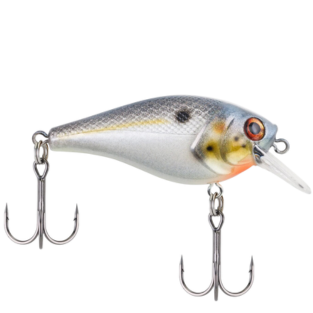 The Berkley SquareBull is a silver-bottomed, black-topped, 2-inch crankbait with a square-shaped bill that keeps its wobble fairly subtle in comparison to other lures. It’s also a shallow lure. So, it will only dive a few feet beneath the surface when you start reeling it in.
The Berkley SquareBull is a silver-bottomed, black-topped, 2-inch crankbait with a square-shaped bill that keeps its wobble fairly subtle in comparison to other lures. It’s also a shallow lure. So, it will only dive a few feet beneath the surface when you start reeling it in.
This is great for clearer bodies of water when you want to catch bass near the top of the water column. That makes it a great choice for most anglers during the spring and summer, but depending on your local water conditions, your experience might vary.
The Berkley SquareBull averages $9 at most stores. It’s not extremely expensive, but it is a bit toward the high end in comparison to other crankbaits you can find in standard big box stores.
2: Strike King KVD 2.5
 The Strike King KVD 2.5 is a reasonably priced crankbait that comes in a variety of color options. For all intents and purposes, it’s just a standard crankbait made to high-quality standards, but the KVD hooks it comes equipped with are well worth it. You get a good lure and hooks that are renowned for their performance.
The Strike King KVD 2.5 is a reasonably priced crankbait that comes in a variety of color options. For all intents and purposes, it’s just a standard crankbait made to high-quality standards, but the KVD hooks it comes equipped with are well worth it. You get a good lure and hooks that are renowned for their performance.
The average price for one of these is $5, and that’s a fair price for the quality you’re getting.
3: MegaBass S-Crank
The MegaBass S-Crank, or “Sexy Crank” as it’s humorously named, is a high-end crankbait. It’s roughly 2.5 inches long, stout compared to other cranks, square billed for a smooth “wandering” presentation, and built to last. The details are also extremely intricate regardless of which pattern you buy.
Unfortunately, these cost $20 per lure. So, you’ll spend quite a bit if you buy a variety of them for different situations.
4: Rapala Balsa Xtreme Big Brat
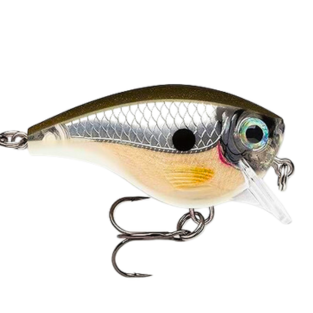 Rapala Balsa, badly behaved and always looking for a fight, the BX Brat is one tough little cookie. Balsa inner core with an armor coating of rugged copolymer, it is the most durable, fish catchin' square bill ever.
Rapala Balsa, badly behaved and always looking for a fight, the BX Brat is one tough little cookie. Balsa inner core with an armor coating of rugged copolymer, it is the most durable, fish catchin' square bill ever.
5: 6TH SENSE Movement 80X Crankbait
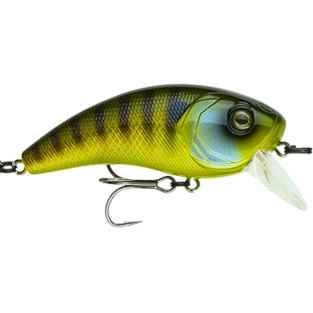 The 6th Sense Movement 80X Crankbait is engineered to excel in various fishing environments, whether you're crashing it through thick shallow cover, ripping it out of grass, cranking over rocky terrain, or burning it in open water. With a diving depth of up to 3 feet and equipped with sharp black nickel hooks, this crankbait is designed to increase your catch rate. The bait's premium paint scheme, along with realistic 3D gill plates, 3D eyes, and 3D scales, adds lifelike appeal to entice more fish.
The 6th Sense Movement 80X Crankbait is engineered to excel in various fishing environments, whether you're crashing it through thick shallow cover, ripping it out of grass, cranking over rocky terrain, or burning it in open water. With a diving depth of up to 3 feet and equipped with sharp black nickel hooks, this crankbait is designed to increase your catch rate. The bait's premium paint scheme, along with realistic 3D gill plates, 3D eyes, and 3D scales, adds lifelike appeal to entice more fish.
6: Googan Squad Recon Crankbait
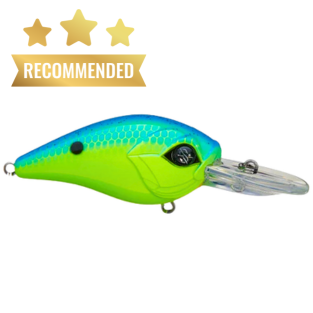 The Googan Squad Recon Crankbait 1/4oz has the diving depth labeled on the bottom of the bait so you always know what depth range your crankbait runs and don’t waste time digging through tackle boxes wondering if you have the right bait. Outfitted with Mustad Triple Grip treble hooks that provide unmatched hook up ratios, the Googan Squad Recon Crankbait 1/4oz is available in a wide range of color patterns.
The Googan Squad Recon Crankbait 1/4oz has the diving depth labeled on the bottom of the bait so you always know what depth range your crankbait runs and don’t waste time digging through tackle boxes wondering if you have the right bait. Outfitted with Mustad Triple Grip treble hooks that provide unmatched hook up ratios, the Googan Squad Recon Crankbait 1/4oz is available in a wide range of color patterns.
Newsletter Signup
Enhance Your Bass Fishing Experience
Concluding your exploration of crankbait bass fishing, we've uncovered the ins and outs of using this effective lure to enhance your fishing adventures. From selecting the right size and color to mastering retrieval techniques, we've covered all you need to know to make the most of crankbaits in various fishing scenarios.
Don't miss out on further enhancing your bass fishing experience with our BassForecast fishing app. Packed with more tips, tricks, and insights, our app is designed to help you become an even more skilled and successful angler.
Download it now to access a wealth of information and join a community of passionate bass fishing enthusiasts.


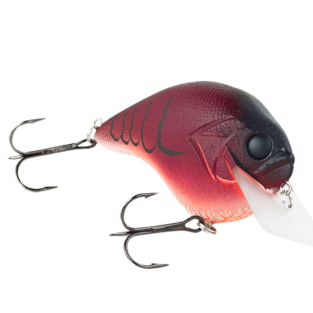


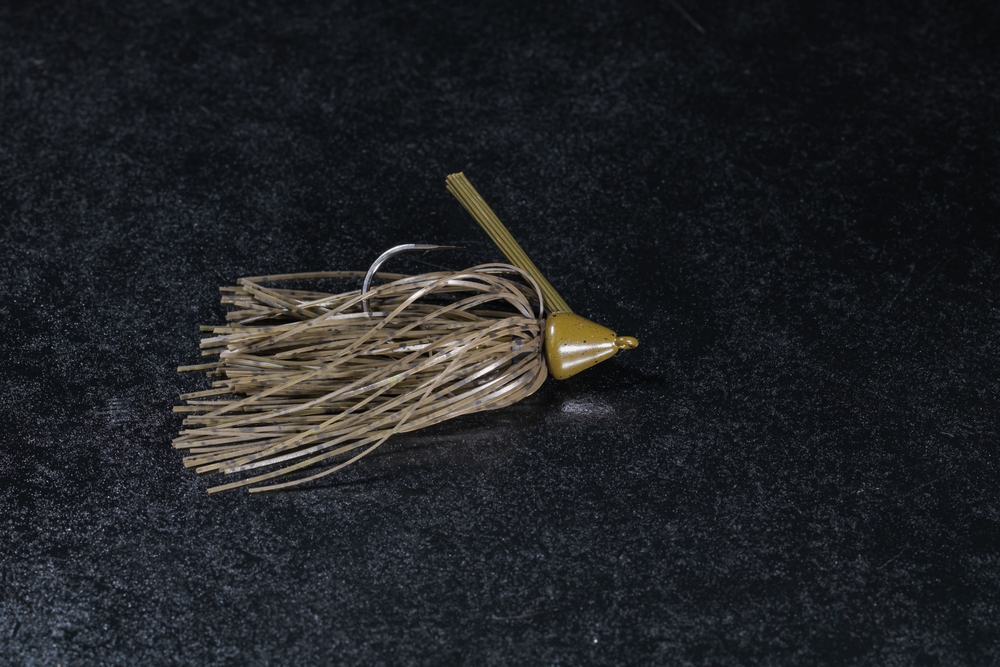
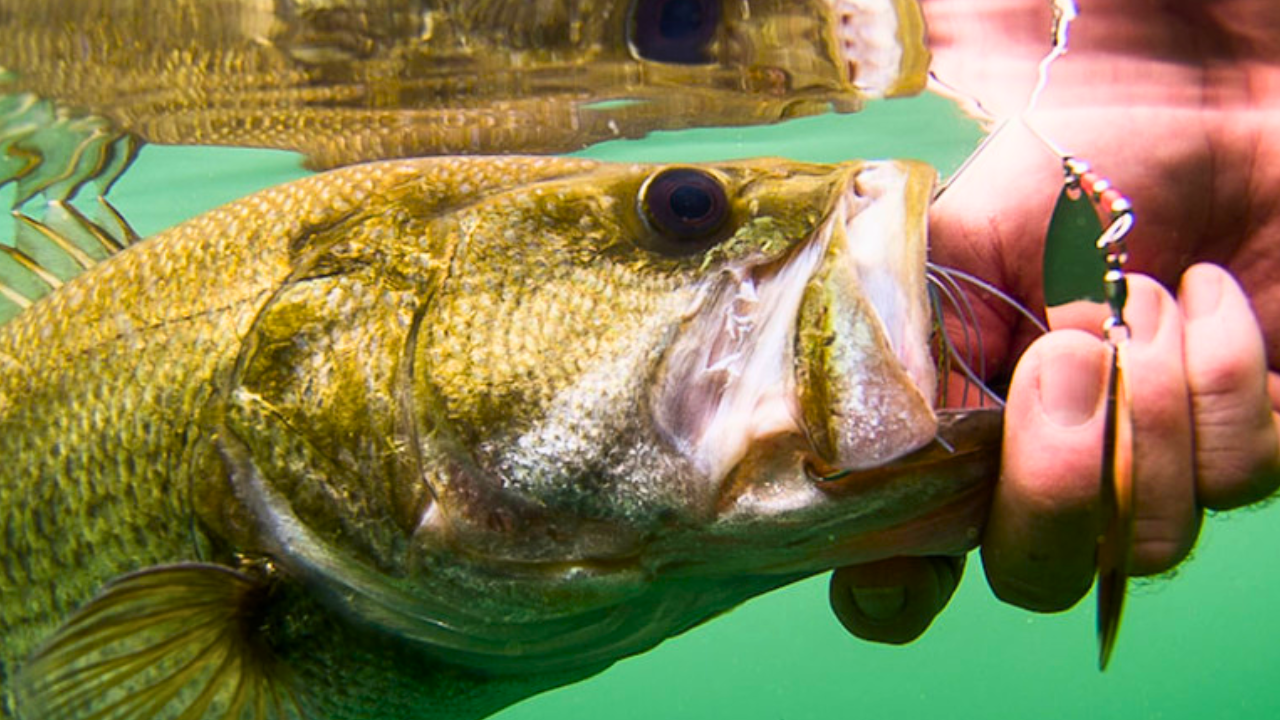
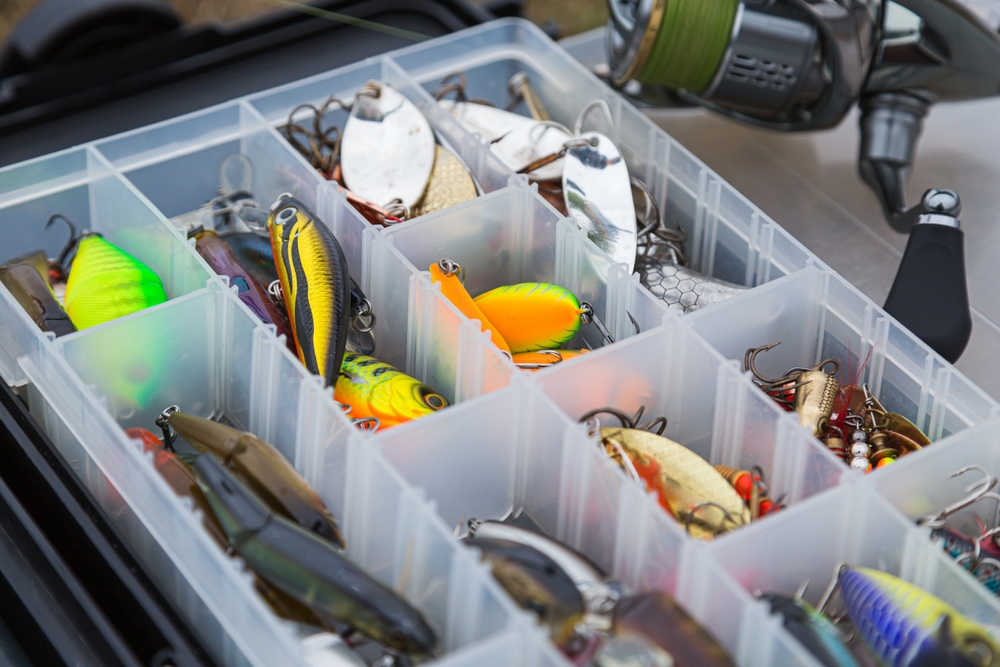
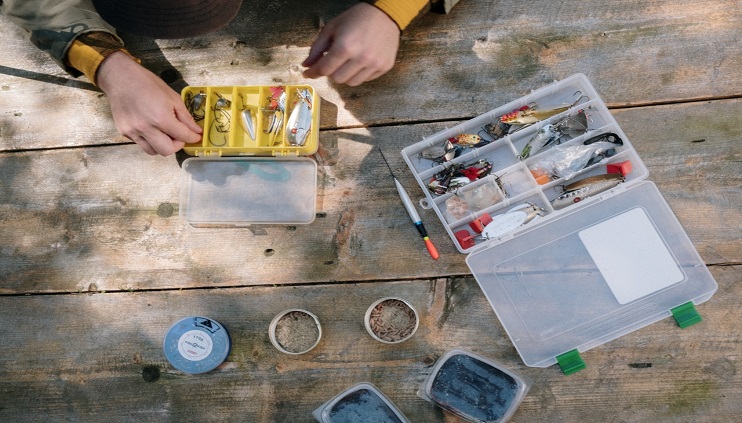
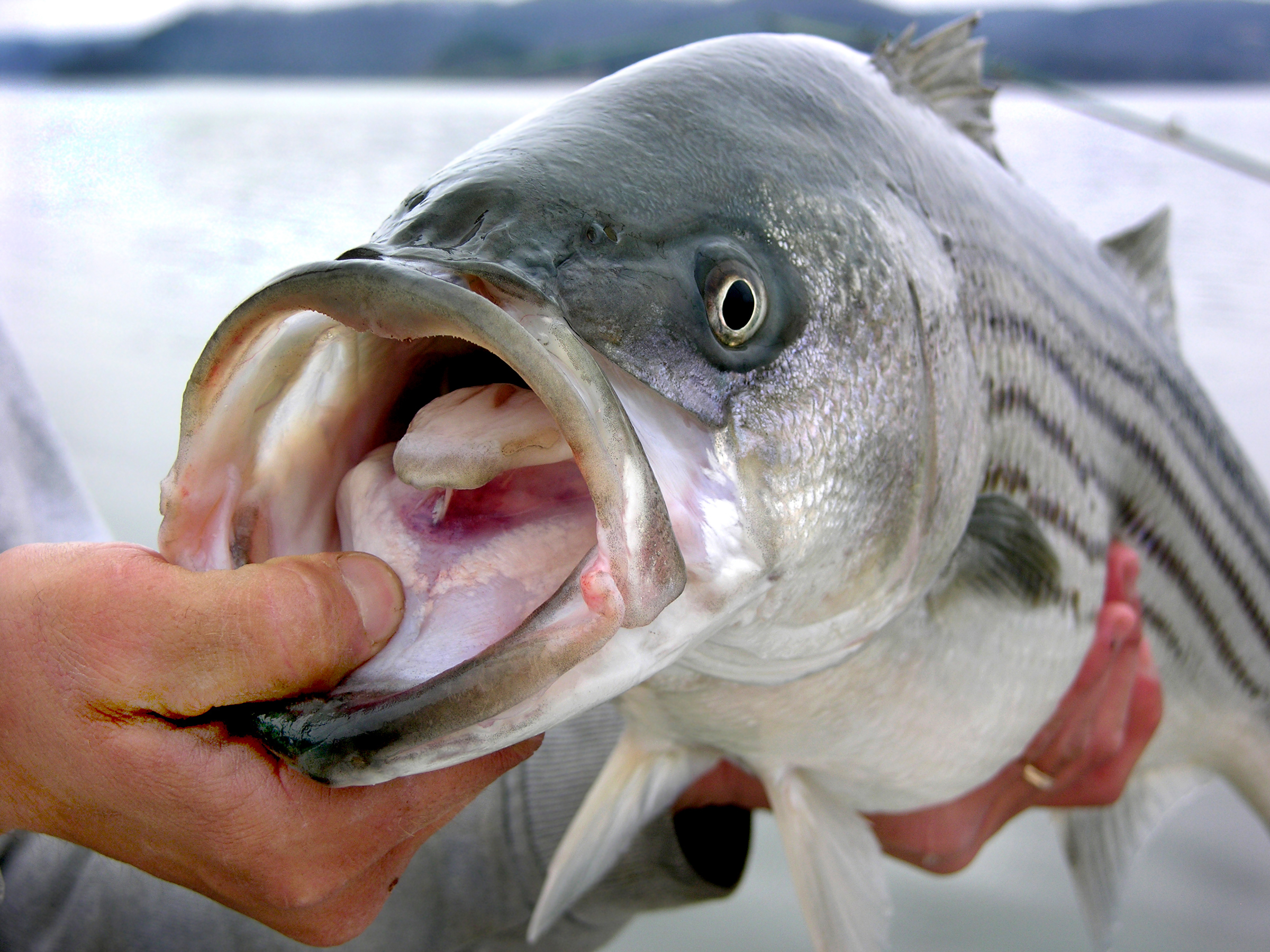

.png)
.png)